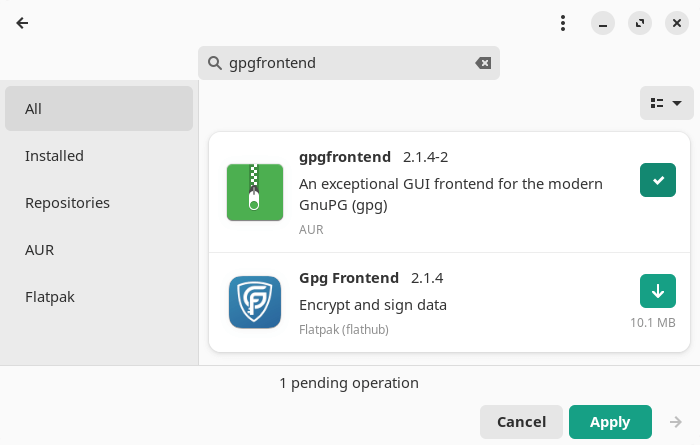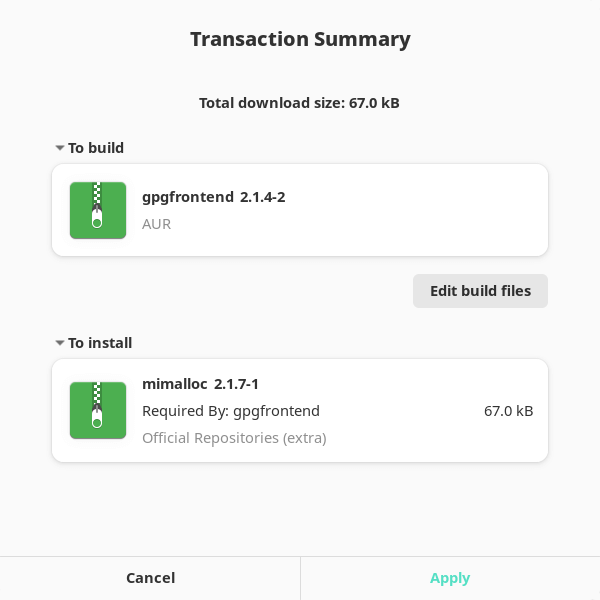GnuPG stands for GNU Privacy Guard and is a tool for secure communication and data storage. The software has two main uses. The first is to encrypt data to ensure its privacy. The second is to “sign” data so that others can determine it is authentic and unmodified.
GnuPG is a superb tool though it’s a command line affair. If you’re looking for a GUI frontend for GnuPG, step forward GpgFrontend. This is a Qt-based free, open-source, robust yet user-friendly, compact and cross-platform tool for OpenPGP encryption. It lets you decrypt and sign text or files.
Installation
We evaluated GpgFrontend using Manjaro, an Arch-based distro, as well as the ubiquitous Ubuntu.
With Manjaro, Pamac (Manjaro’s front-end installation tool) lets us install GpgFrontend from a Flatpak. And there’s also a package in the Arch User Repository. We went with the latter.

Our test system was missing a dependency, but Pamac handles this for us.

Next page: Page 2 – In Operation and Summary
Pages in this article:
Page 1 – Introduction and Installation
Page 2 – In Operation and Summary
